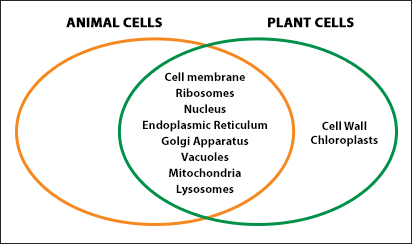Science
A cell is the smallest unit in a living organism that is capable of carrying out all of the activities of life. It would stand to reason, then, that a cell could survive by itself. Indeed, there are many single-celled organisms that can be found all around us, such as an amoeba (a single-celled organism found in water); however, most of the living things we see are made of billions of cells that all work together. In the 17th century, after the invention of the microscope, Robert Hooke was able to see cells for the first time. Since then scientists have learned much about cells and have developed the Cell Theory, which says…
- A cell is the basic unit of life.
- All organisms are made of one or more cells.
- All cells come from existing cells.
There are two basic types of cells: plant and animal. All cells can be classified as one or the other. For the most part, they are very similar; however, there are a few important differences. Let's look at what they have in common first.
Plant and animal cells both have the following:
- A cell membrane (plasma membrane).
- A nucleus.
- Cytoplasm (a jellylike substance that fills the inside of a cell.
- Organelles (special structures inside a cell that each perform a necessary activity).
Plant cells have the following:
- A cell wall.
- Chloroplasts (one type of organelle).
Look at the following diagram. A plant cell cross-section is shown on the left and an animal cell cross-section is shown on the right.
Both plant and animal cells are very complex, yet they are very similar when compared to each other.
Now look at the Venn diagram that compares and contrasts plant and animal cells. Think about the cross-sectional cell diagram above. Both are explanations of the same concepts but use different approaches to visually explain the information.

Isn't it interesting that there is so much diversity among living things, yet if you look at their cells, they are similar? The only real difference between a human cell, a horse cell, and a chicken cell is the kind of genetic information found inside the cell's nuclei.













